A Quick Overview of Data Science Universe
This article was published as a part of the Data Science Blogathon.
What is Data Science (DS)?
Data Science is a blend of various fields like Probability, Statistics, Programming, Analysis, Cloud Computing, etc; which are used to extract value from the data provided. It is a vast field which is a booming field and all people are learning these skills to become a professional in this domain. A skilled person in all the above-mentioned sub-domains of data science is called a Data Scientist. He/She is a very skilled person in all the areas of DS.
Roles in Data Science:
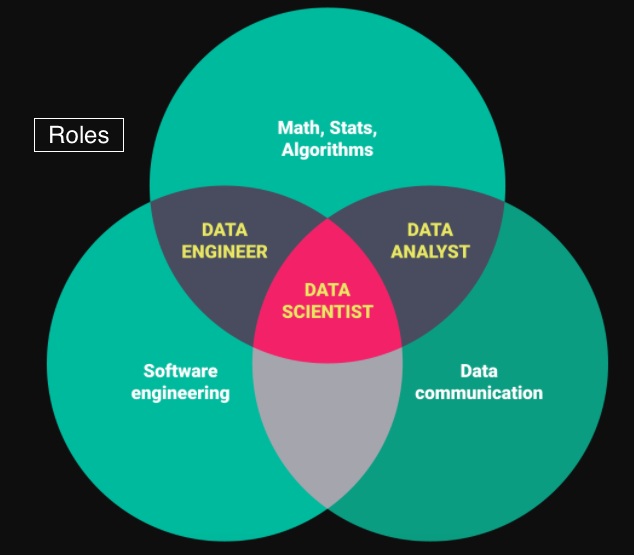
Roles of a Data Scientist
These are the major roles in Data Science. So it’s clear from the venn that a person has an opportunity to become either a Data Engineer, Data Scientist or Data Engineer, etc;. So which means there are enormous choices and opportunities.
Who is a Data Scientist?
A data scientist is a professional responsible for collecting, analyzing, and interpreting extremely large amounts of data. The data science role is entirely different from several traditional technical roles, including mathematician, scientist, statistician, and computer professional. This job requires the use of advanced analytics technologies, including machine learning and predictive modeling.
A data scientist requires large amounts of data to develop hypotheses, make inferences, and analyze customer and market trends. Basic responsibilities include gathering and analyzing data, using various types of analytics and reporting tools to detect patterns, trends, and relationships in data sets.
In business, data scientists typically work in teams to mine for information that can be used to predict customer behavior and identify new revenue opportunities. In many organizations, data scientists are also responsible for setting best practices for collecting data, using analysis tools, and interpreting data.
The demand for data science skills has grown significantly over the years, as companies look to glean useful information from big data, the voluminous amounts of structured, unstructured, and semi-structured data that a large enterprise or IoT produces and collects.
Types of Data:
A person who knows a bit of programming would have known about data-types. But data-types are different from Types of Data as the data-types deal with programming and the latter deals with DS.
There are two types of Data:
-> Structured Data,
-> Unstructured Data.
Structured Data:

Structured Data
The above image looks very cozy and unknown things mentioned, but let’s not bother about it, but what’s clear from the above image is that data is represented in a table and they are sorted and are grouped. So, therefore, structured data is one that is represented in a table format or any other easily distinguishable form, from where we can retrieve data and it is highly sorted. It may or may not have any outliers.
Unstructured Data:
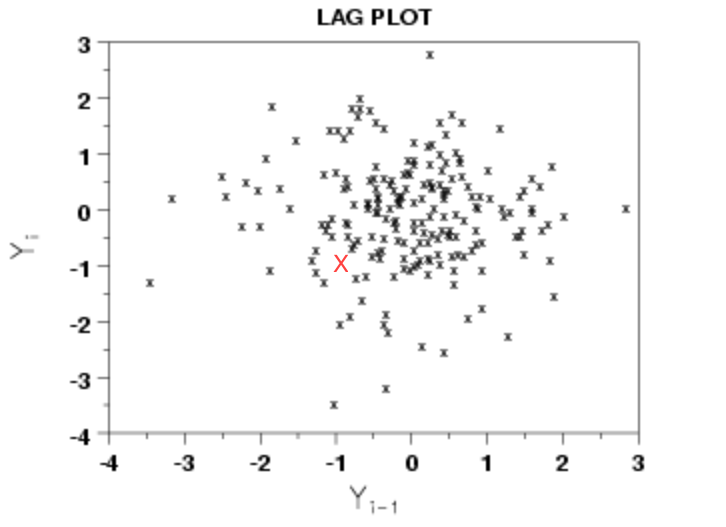
Unstructured Data
Let’s just analyze the points plotted in the graph without considerations of the scale, what’s on the X or Y axis etc; In the graph, we have a point named X(in red). So this is the point where the data is supposed to lie. With respect to this point then we can find that very few are in close range with this point.
So similarly when it comes to data when we may have all the data which is absolutely correct but they may be randomized. So with respect to the above example, unstructured data is one that is not sorted and is very much randomized from which analyzing the data is difficult. It will have many outliers.
And in the recent decade, most of the data is unstructured and is quite clear from the graph. So it is very much necessary to know the difference between structures and unstructured data.
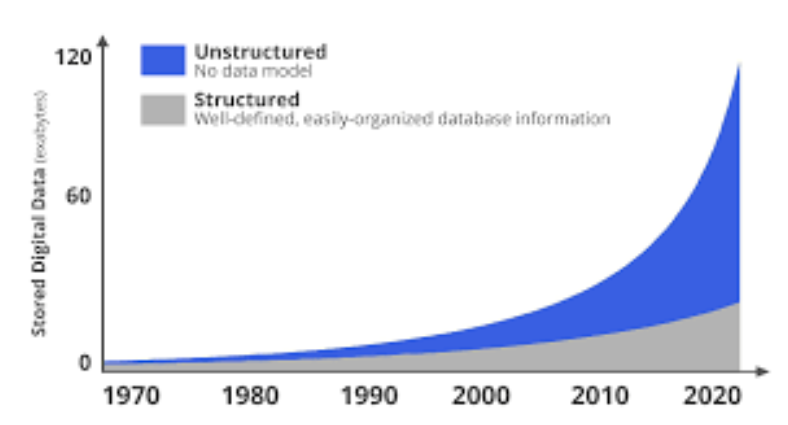
Trends
Role of Machine Learning in DS:
As said above, DS is a vast domain and has a correlation with many fields and one such field is Machine Learning(ML). So let’s look at the impact of ML in DS:
>For Pattern Finding: The ultimate goal with the data we have is to predict the pattern and users’ choice and then give a conclusion regarding the particular data model available. The companies are mainly focused on pattern-finding as this helps to find the users likings say for a particular period and the company mainly focuses on that kind of products which are liked by the customers and give offers to improve and increase their business.
> For making Predictions: So from a given data set we are required to find the desired output like a future trend, so we can make use of ML algorithms as these are best suited. This is based on the concept of supervised learning. As humans learn from their mistakes it is the same in the case of machines too. So with the help of an already available data model, we would train the machine to perform a specific task and this will help the machine to learn and would feature itself in the task by repeatedly performing the same task.
Many people usually get confused with data science and data analysts. So with a given tabulation, it is easily distinguished.
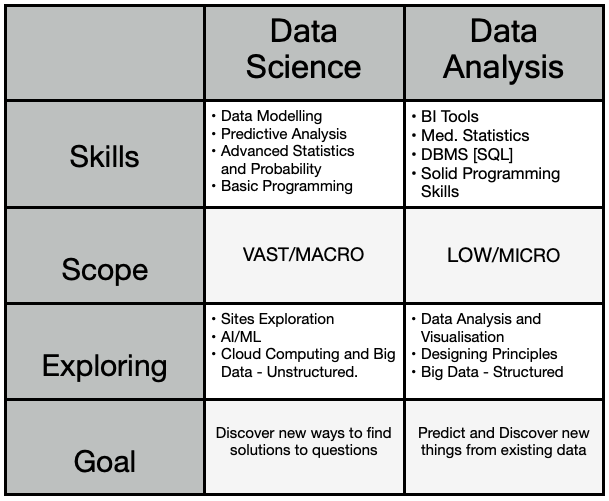
DS vs Data Analyst
So hope the tabulation makes the point clear.
Business Intelligence(BI):
From the skills which a Data Analyst must possess we came across the term BI. Therefore,
BI is a set of processes, architectures, and technologies that convert raw data into meaningful information that drives profitable business actions.It is a suite of software and services to transform data into actionable intelligence and knowledge. So it mainly deals with the intention to strive the business in the best possible way. Many tech-giants are really using this technology to boost their business.
Domains of Data Science:
As mentioned earlier DS is a vast domain and has many co-relations with many other fields and there is a wide range of opportunities available if you are a really skilled person.
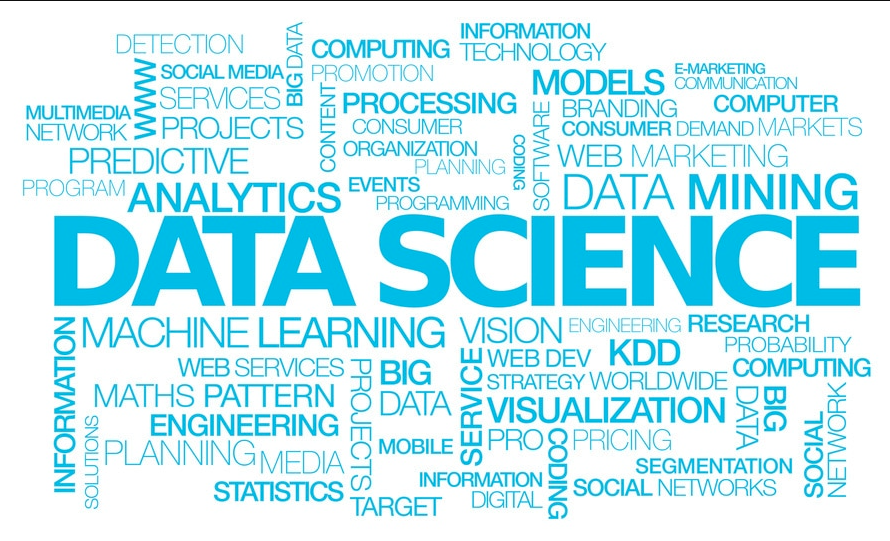
Domains
The vast nature makes many people in different fields have a hand at DS as it helps them boost their career.
To get a more clear understanding of DS it is necessary to know the life cycle of DS.
Life Cycle of Data Science:
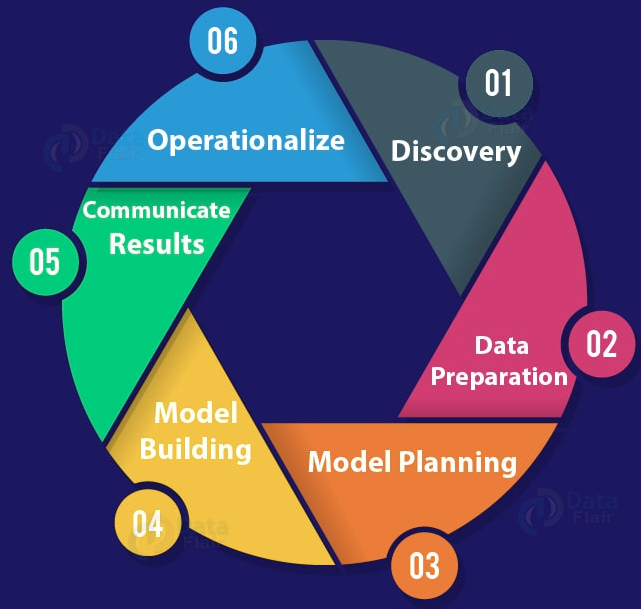
1 -> Discovery: Before starting the project, it is necessary to know the requirements, priority, budget, specifications and budget, etc;. We must also prepare an initial hypothesis, understand the problem and get a clear idea of the project beforehand so that we are not stuck in the middle of the project.
2 – > Data Preparation: In this phase, we need to get the required data model and the data sets to perform Data Analytics for the whole project. We need to perform ETLT[Extract, Transform, Load, and Transform] on the available data to keep the data ready for the next stage.
3 -> Model Planning: We would develop models and techniques to draw relationships with the data available. These relationships will be the building blocks that will be useful in the later stages.
There are various tools to perform Model Planning:

These are the various model planning tools in which a few are open platforms whereas others are paid and these tools can be used to perform model planning.
4 -> Model Building: This uses a set of algorithms being applied on the previous fetched results and tries to interpret the patterns and predict the future trend. This acts as a base for the whole business as it helps the companies to depict their growth in the upcoming years. With the help of existing data sets, we would train the machines and predict the model. We would learn association, classification, and clustering, etc; in this stage.
5 -> Communication Results: In the penultimate stage, we are required to interpret the results obtained with the required results made in the initial stages. If the results match then we are on the right track and the goal is achieved 90%.
6 -> Operationalise: In the ultimate stage if the goal is achieved the model is being made to operationalize in real life and tested. If the desired output is achieved then the goal is achieved cent percent. And it is also necessary to maintain the data model for future reference.
Major areas of Data Science:
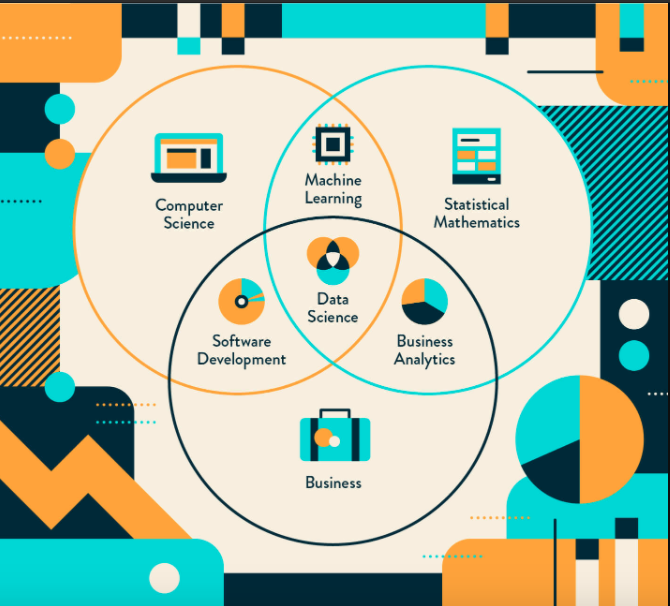
Major Areas
Hope to see many Data Scientists in the near future.
Thanks to one and all for reading my blog and hope this helps. Positive or negative comments are appreciated because this is my first blog and everyone learns from mistakes :).
The media shown in this article are not owned by Analytics Vidhya and is used at the Author’s discretion.










Very nice and quick intro to DS and very tempting to do DS
Fundamentals are well defined and good pictorial represntation to make the concepts understand with ease.